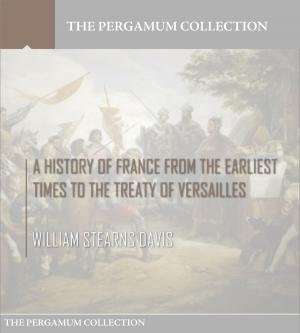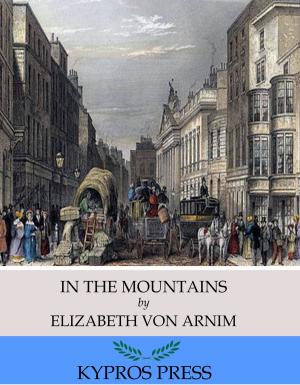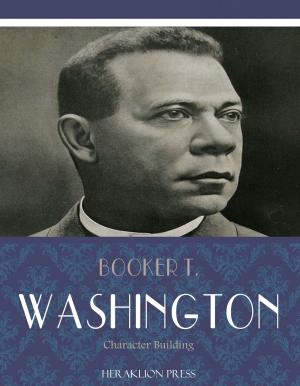Fighting for Glory: The History and Legacy of the 54th Massachusetts Volunteer Infantry Regiment
Nonfiction, Social & Cultural Studies, Social Science, Cultural Studies, African-American Studies, History, Americas, United States, Civil War Period (1850-1877)| Author: | Charles River Editors | ISBN: | 9781475323399 |
| Publisher: | Charles River Editors | Publication: | April 20, 2013 |
| Imprint: | Language: | English |
| Author: | Charles River Editors |
| ISBN: | 9781475323399 |
| Publisher: | Charles River Editors |
| Publication: | April 20, 2013 |
| Imprint: | |
| Language: | English |
*Includes pictures of important people, places, and events.*Includes accounts of the fighting at Fort Wagner written by some of the 54th's soldiers. *Profiles men of the 54th, including Robert Gould Shaw *Includes a Bibliography for further reading.*Includes a Table of Contents. “A deserted homestead is always a sad sight, but here in the South we must look a little deeper than the surface, and then we see that every such overgrown plantation, and empty house, is a harbinger of freedom to the slaves, and every lover of his country, even if he have no feeling for the slaves themselves, should rejoice.” Robert Gould ShawFrom the Stonewall Brigade to the Iron Brigade, Americans have long been fascinated by the Civil Wars most famous and legendary units, and many are familiar with the 20th Maines defense of Little Round Top at the Battle of Gettysburg. But ironically, perhaps the most famous regiment of the entire war today is the 54th Massachusetts, which was one of the first and ultimately the best known regiment that consisted of black soldiers. Like most black soldiers, the 54th received discriminatory treatment from the Army, as white men on both sides were wary of trusting black soldiers in heavy combat situations, despite the fact that the 54th acquitted itself well in a nearly suicidal attack at Fort Wagner. As a result, the 54th fought in several battles of lesser note, and they might have faded into obscurity if not for the critically acclaimed movie Glory, which looked at the lives of its commander, Colonel Robert Gould Shaw, and its soldiers. Ironically, though it was unknown at the time of the movie, one of the soldiers in the regiment told his captors he had fought for glory.The movie made the 54th famous, and those who are familiar with the regiment are also familiar with its attack on Fort Wagner, but the story of its creation and its entire service during the Civil War is remarkable from start to finish. The brainchild of abolitionists and the product of a stalled war effort, the 54th was just one of many regiments of black soldiers who fought during the Civil War, and to a large degree it has become representative of the service and sacrifice of black soldiers on behalf of both their country and their civil rights. Fighting for Glory: The History and Legacy of the 54th Massachusetts comprehensively covers the history and service of the famous regiment in the Civil War, profiling its origins, soldiers, leaders, controversies and legacy. Along with pictures of important people, places, and events, you will learn about the 54th like you never have before, in no time at all.
*Includes pictures of important people, places, and events.*Includes accounts of the fighting at Fort Wagner written by some of the 54th's soldiers. *Profiles men of the 54th, including Robert Gould Shaw *Includes a Bibliography for further reading.*Includes a Table of Contents. “A deserted homestead is always a sad sight, but here in the South we must look a little deeper than the surface, and then we see that every such overgrown plantation, and empty house, is a harbinger of freedom to the slaves, and every lover of his country, even if he have no feeling for the slaves themselves, should rejoice.” Robert Gould ShawFrom the Stonewall Brigade to the Iron Brigade, Americans have long been fascinated by the Civil Wars most famous and legendary units, and many are familiar with the 20th Maines defense of Little Round Top at the Battle of Gettysburg. But ironically, perhaps the most famous regiment of the entire war today is the 54th Massachusetts, which was one of the first and ultimately the best known regiment that consisted of black soldiers. Like most black soldiers, the 54th received discriminatory treatment from the Army, as white men on both sides were wary of trusting black soldiers in heavy combat situations, despite the fact that the 54th acquitted itself well in a nearly suicidal attack at Fort Wagner. As a result, the 54th fought in several battles of lesser note, and they might have faded into obscurity if not for the critically acclaimed movie Glory, which looked at the lives of its commander, Colonel Robert Gould Shaw, and its soldiers. Ironically, though it was unknown at the time of the movie, one of the soldiers in the regiment told his captors he had fought for glory.The movie made the 54th famous, and those who are familiar with the regiment are also familiar with its attack on Fort Wagner, but the story of its creation and its entire service during the Civil War is remarkable from start to finish. The brainchild of abolitionists and the product of a stalled war effort, the 54th was just one of many regiments of black soldiers who fought during the Civil War, and to a large degree it has become representative of the service and sacrifice of black soldiers on behalf of both their country and their civil rights. Fighting for Glory: The History and Legacy of the 54th Massachusetts comprehensively covers the history and service of the famous regiment in the Civil War, profiling its origins, soldiers, leaders, controversies and legacy. Along with pictures of important people, places, and events, you will learn about the 54th like you never have before, in no time at all.















